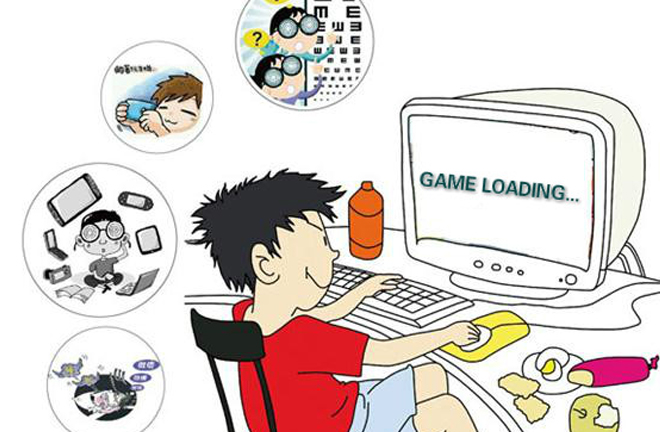Teenagers spend more time on video games as they grow up

Time that teenagers spend on video games is increasing as they grow up, particularly of high school students as teachers and parents tend to reduce control over them.
Gaming addiction has become a problem in China, according to a recent report on youth behavior. A research team from the University of the Chinese Academy of Social Sciences surveyed nearly 5,000 primary and middle school students across the country. “Compared with the individual media reports about internet addition, our investigation results give a full picture of the current situation,” said team leader Zhou Huazhen, an associate professor who has spent years focusing on adolescent behavioral studies.
The survey shows that most teenagers spend less than three hours on video games a day, while nearly 20 percent of students play games for at least four hours every day. “According to the WHO classification, people are likely to have a gaming disorder if they spend five hours video-gaming per day and the situation appears at least five days a week. In other words, one out of five Chinese teenagers is likely to be facing this problem or possible risks,” Zhou said.
The research team chose 30 urban and suburban schools in four places including Beijing, Wuhan in Hubei Province as well as Dalian and Xiuyan in Liaoning Province. They found that 75 percent of the surveyed students have played electronic games. In terms of frequency, most of them play no more than three days a week whereas about 25 percent of them play games at least four days a week. The survey revealed that boys’ video-gaming is much more frequent than the girls’, which coincides with previous research findings. “This phenomenon points to boys’ weaker self-control, stronger curiosity and individual characters,” Zhou explained. Also, time that teenagers spend on video games is increasing as they grow up, particularly of high school students. 17 percent of primary school students play video games four days a week and the number climbs to 21 percent when it comes to their counterparts in middle schools. As the students get older, the proportion continues to grow, so that about one third of high schoolers engage in video games four days per week.
Video gaming frequency is determined in part by access and the level of parental control, Zhou said. Children have more desire to socialize with friends after adolescence and their school work becomes more reliant on digital equipment. Meanwhile, teachers and parents tend to reduce their control over the students, making it difficult for parents to exert control. This all adds up to teenagers being more likely to play video games.
Beijing has the largest proportion of students who engage in video-gaming at least four days per week, successively followed by Dalian, Wuhan and Xiuyan and their numbers are 25.5 percent, 25.2 percent, 21.6 percent and 20.3 percent respectively. The circumstances also apply to the proportion of students who play video games two or three days a week. These four places in our survey represent different areas and provide diversity in terms of economic and cultural development. Beijing is a municipality while Wuhan is a provincial capital. Dalian is not a provincial capital while Xiuyan is a suburban county. In this way, they are reflective of China’s regional development in the aspects of society, economy and culture.
Video gaming frequency is not related to whether teenagers are left-behind children, migrant children or the only-child in their families. However, these factors can impact duration of gaming. More left-behind children spend a lot of time on video games compare to the others, particularly when it comes to the categories of five hours and six hours.
Video gaming duration is more relevant to parental control. Without parental attention, many left-behind children barely have restrictions on their own behaviors, Zhou said.
As for all surveyed students, about half of them play video games for more than one hour a day and over 30 percent of them two or three hours. About 13 percent of the teenagers fall into the category of four to seven hours of video gaming a day. In addition, one out of twenty students spend eight hours or longer on video game every day.
The period of middle school is crucial for the development of internet habits, and this is when video games can end up making university students obsessed with the internet and abandon their school work, said Zhang Shuhui, deputy director of the University of the Chinese Academy of Social Sciences. Zhang has been studying the mindset of university students for years and he collaborated with Zhou’s team in a 2010 research project that looked at nearly 15,000 adolescents between 11 and 15 years old from 13 provinces. The results showed that only 6.7 percent of these students used internet for six hours or more from Monday to Friday.
The 2010 survey is still ripe for comparison despite its indexes being different from the current one. These behaviors have intensified in recent years, Zhang added.
The article is edited and translated from the China Youth Daily.
(edited by MA YUHONG)

 PRINT
PRINT CLOSE
CLOSE